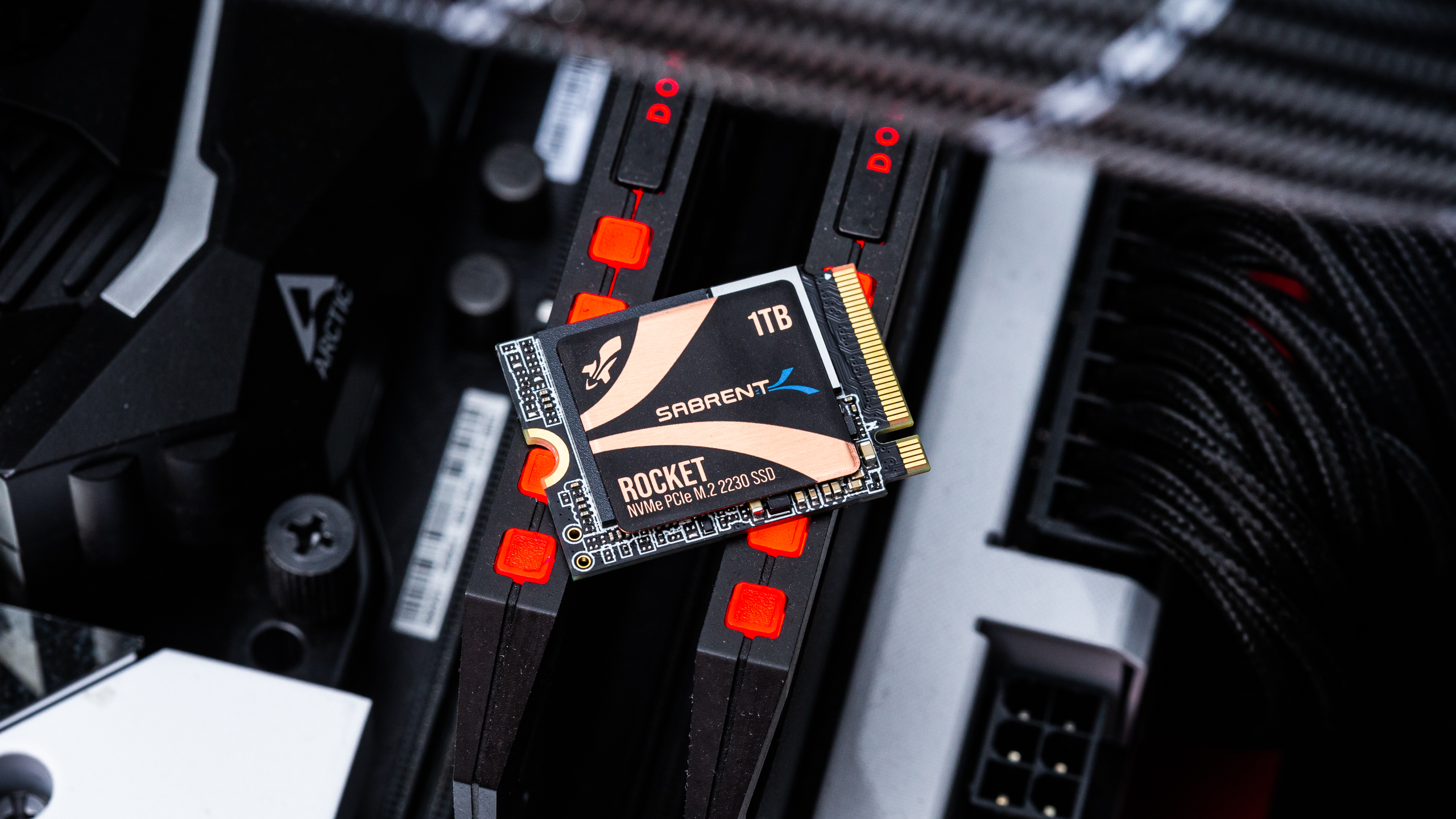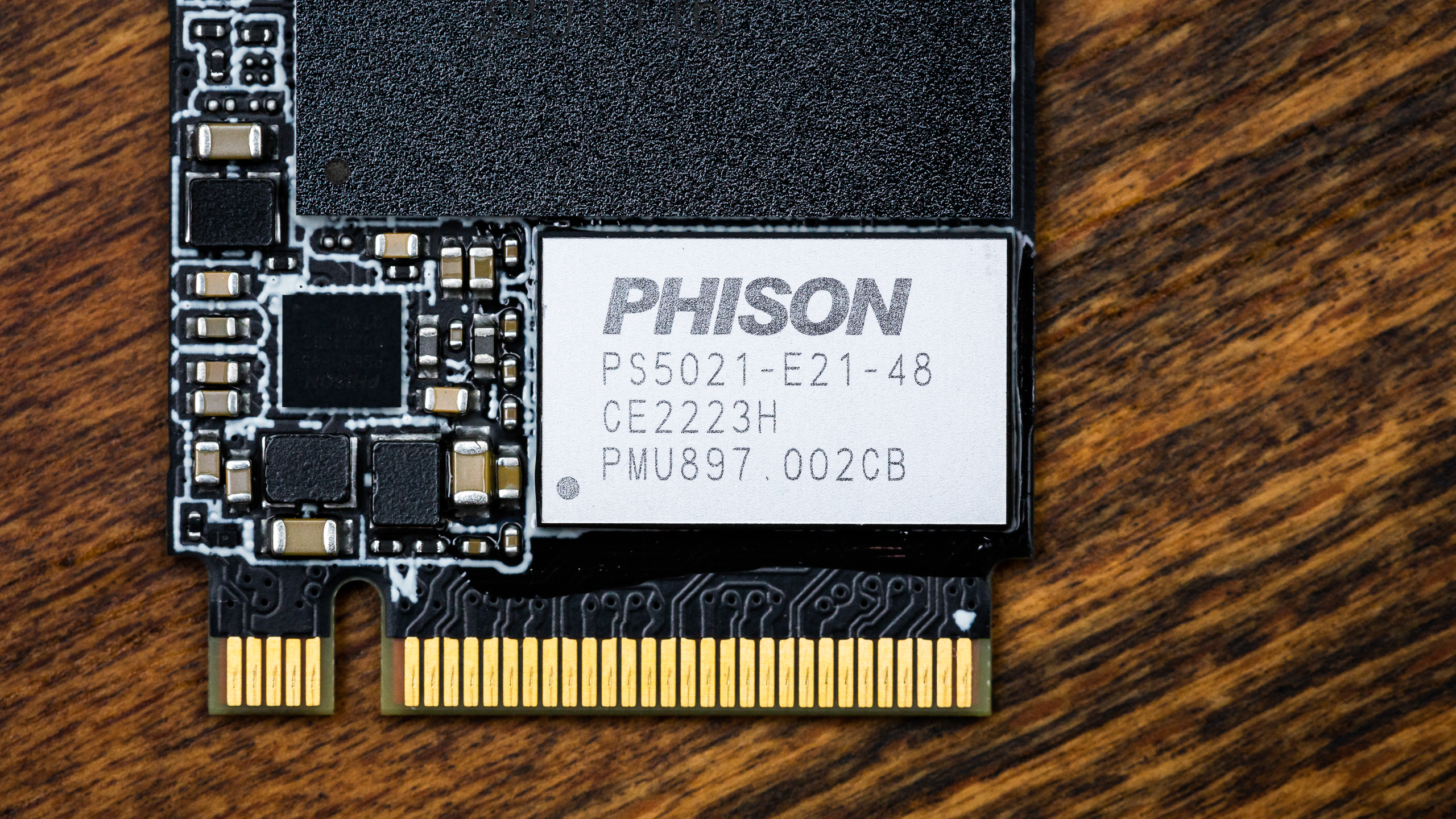Tom's Hardware Verdict
The Sabrent Rocket 2230 is a fast and efficient M.2 2230 SSD. This makes it a great option for the Steam Deck and other mobile platforms like Microsoft’s Surface. It is limited to 1TB and costs more than M.2 2280 alternatives, but is backed by a known brand.
Pros
- +
Retail M.2 2230 form factor for special devices
- +
Good all-around and sustained performance
- +
Very efficient
- +
Good support and registered warranty
Cons
- -
Pricey vs. M.2 2280
- -
No 2TB option
- -
Full warranty requires registration
Why you can trust Tom's Hardware
Sabrent's Rocket 2230 is a tiny but capable PCIe 4.0 SSD designed to fit in special devices as an internal storage upgrade or replacement. These devices include Valve’s Steam Deck, Microsoft’s Surface series of products, some ultrabooks, NUCs, HTPCs, and more. This drive exhibits good all-around and sustained performance, and our testing showsit's also quite efficient. There are multiple capacities offered, but it’s a shame that a 2TB model doesn’t exist yet. This M.2 2230 drive will cost you significantly more than its longer 2280 cousins, but the promise of a retail product with a name behind it is probably worth the premium.
The Inland TN436 was the first retail PCIe 4.0 M.2 2230 NVMe SSD that we reviewed, and it’s good to see another option. The Rocket 2230 is faster, more efficient, and also has 256GB and 512GB SKUs. The latter are useful for those on tight budgets who want to upgrade a 64GB eMMC Steam Deck or other storage-limited device. If you just want to toss a terabyte into your Steam Deck, though, either drive will do just fine. The Deck is not particularly demanding, although other devices might be able to make better use of the Rocket 2230’s power. We are more interested in seeing additional competition in this space to lower prices, and we'd also like to see a 2TB option.
Most alternatives are OEM drives, which are often second-hand with weaker warranties. Our TN436 review lacked M.2 2230 drives for comparison and that is one reason why. For this review, we only have the Rocket 2230 and the Inland drive as direct 2230 comparisons. However, we have addressed the most popular OEM options in various ways throughout the review. A quick example would be the WD Black SN770 being a substitute for the OEM SN740, since they are effectively the same drive aside from length. Being shorter can make cooling more difficult, but the performance characteristics are the same. We also have the Team Group MP44L to show that against the Rocket 2230.
We can recommend the Rocket 2230 within its class of drives, as it takes proven hardware and simply puts it into a shorter form factor. Our only caveat is price which, to be fair, is still generally competitive. Although this is a PCIe 4.0 drive, it will work perfectly well in 3.0 and even 2.0 systems. However, the newer hardware should make for a more efficient package, so the 4.0 interface is just a bonus in those cases.
Specifications
| Product | 256GB | 512GB | 1TB |
|---|---|---|---|
| Pricing | $49.99 | $89.99 | $159.99 |
| Form Factor | M.2 2230 | M.2 2230 | M.2 2230 |
| Interface / Protocol | PCIe 4.0 x4 / NVMe 1.4 | PCIe 4.0 x4 / NVMe 1.4 | PCIe 4.0 x4 / NVMe 1.4 |
| Controller | Phison E21T | Phison E21T | Phison E21T |
| DRAM | N/A (HMB) | N/A (HMB) | N/A (HMB) |
| Memory | Micron 176-Layer TLC | Micron 176-Layer TLC | Micron 176-Layer TLC |
| Sequential Read | 4,650MBps | 5,000MBps | 4,750MBps |
| Sequential Write | 1,900MBps | 3,700MBps | 4,300MBps |
| Random Read | 220K | 440K | 450K |
| Random Write | 470K | 520K | 545K |
| Security | N/A | N/A | N/A |
| Endurance (TBW) | 200TB | 300TB | 600TB |
| Part Number | SB-2130-256 | SB-2130-512 | SB-2130-1TB |
| Warranty | 5-Year | 5-Year | 5-Year |
The Sabrent Rocket 2230 is a PCIe 4.0 SSD available in the M.2 2230 form factor in 256GB, 512GB, and 1TB. 2TB is possible in this form factor, but is more difficult to achieve with a single-sided drive, as many devices require. It can reach up to 5,000/4,300MBps for sequential read and write and up to 450K/545K random read and write IOPS. The former is plenty to saturate devices that are limited to PCIe 3.0 x4, but these devices can still benefit from other performance and efficiency improvements.
The Rocket 2230 comes with a 5-year warranty when registered (disappointingly, it's just two years if you don't register) with 200TB, 300TB, and 600TB of TBW, depending on capacity. This is an ample amount and is close to the standard. At the time of review, pricing was $49.99, $89.99, and $159.99 for each of the three launch capacities. There has been some initial fluctuation in the 1TB price, perhaps due to the popularity of that specific capacity, but it currently sits somewhere in-between the Micro Center and Amazon prices for the 1TB TN436. This is higher than similar 1TB M.2 2280 drives, but is competitive with second-hand 2230 OEM alternatives.
Software and Accessories
Sabrent sells this drive as being compatible with its OEM version of Acronis True Image. This software makes it easy to clone, image, and backup data, but is limited in functionality. We would recommend something with sector-by-sector copy, such as Macrium Reflect Free if trying to clone something like a Steam Deck SteamOS installation.
Get Tom's Hardware's best news and in-depth reviews, straight to your inbox.
Sabrent also offers its own SSD toolbox with the Sabrent Rocket Control Panel, which should support this drive in the future, if and when any firmware updates become available. This software can also monitor drive health and other data, but it is possible to download and use the free CrystalDiskInfo application to get this information, as well.
A Closer Look
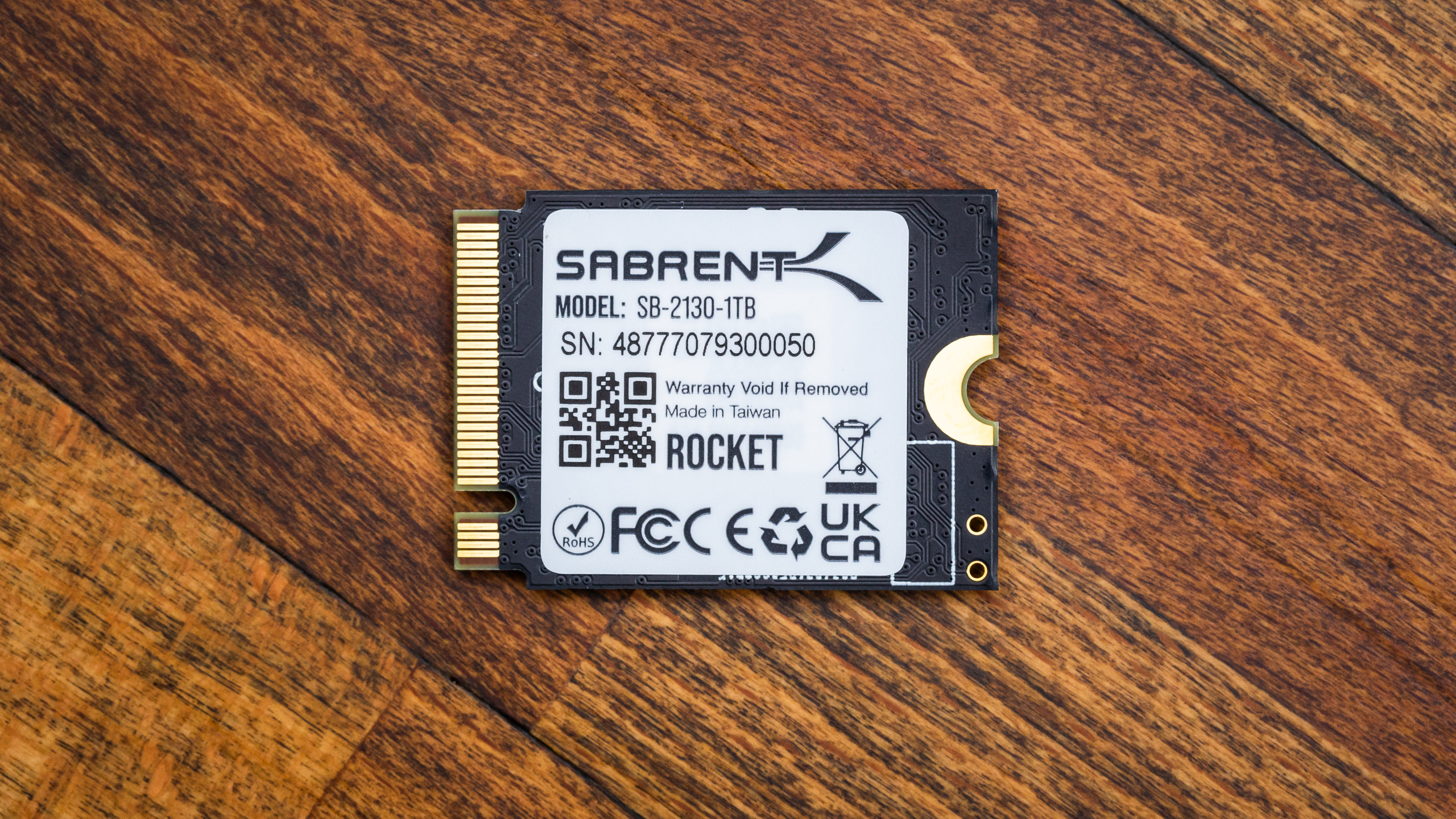
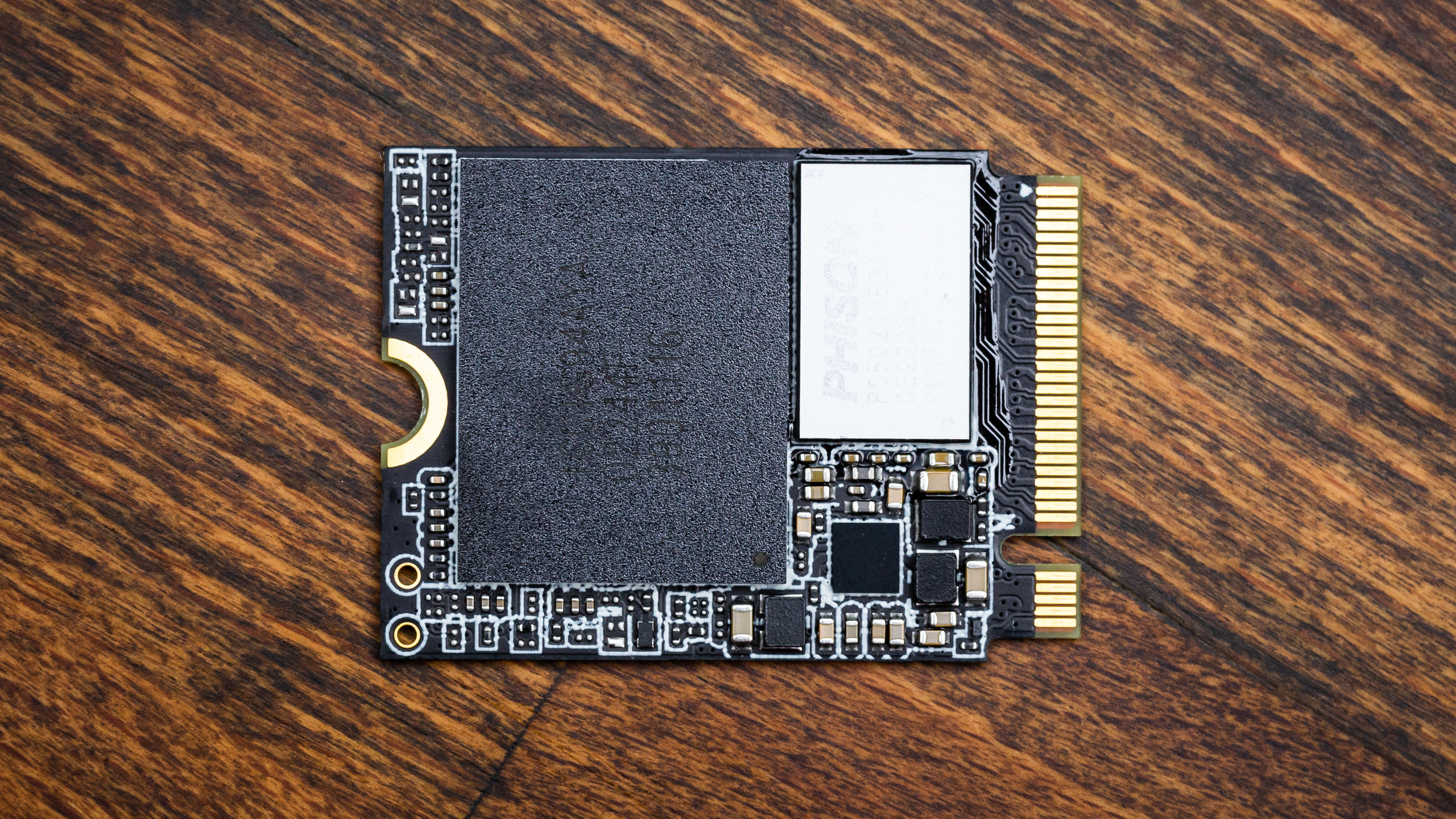
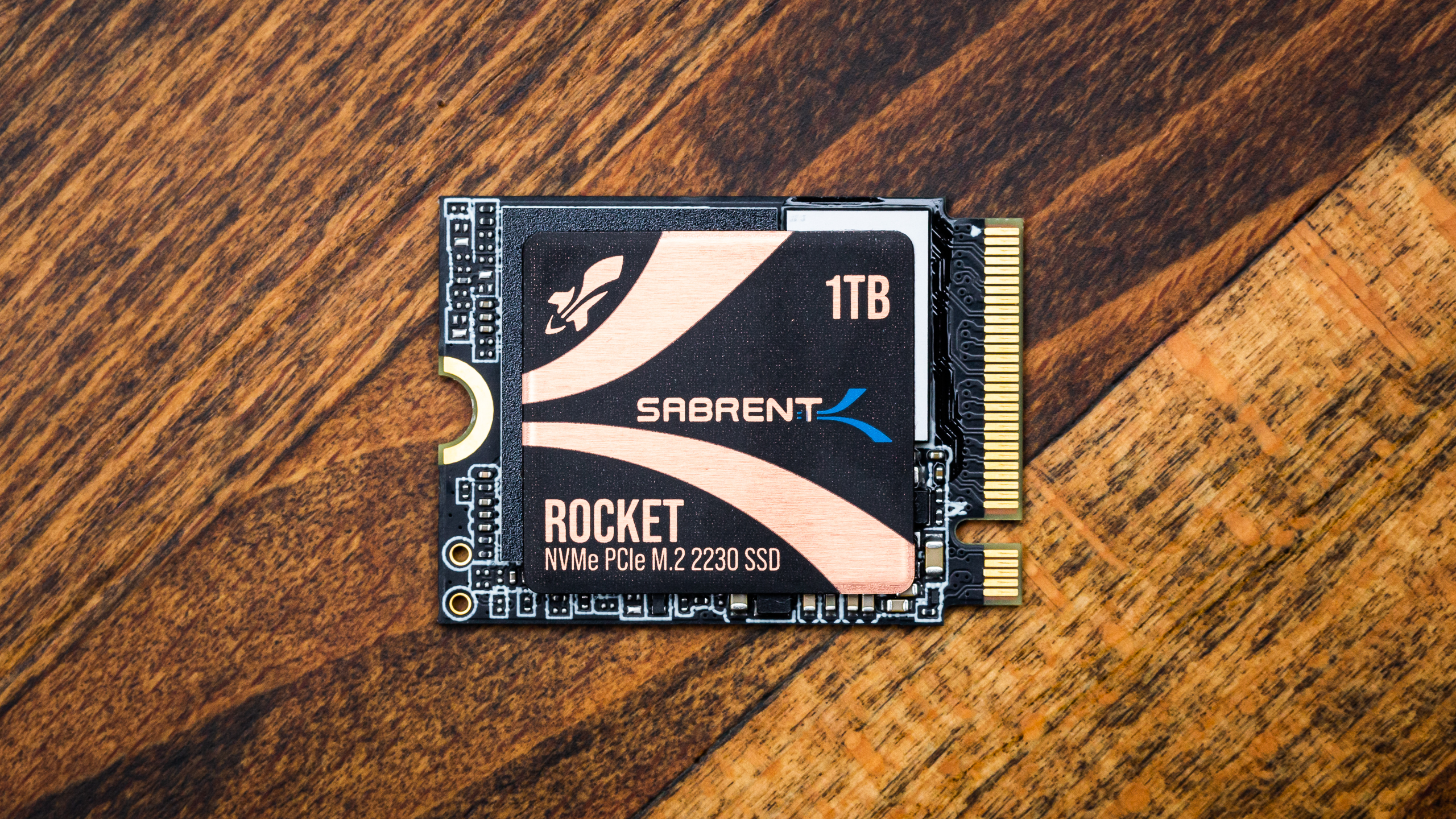
The Sabrent Rocket 2230 is a diminutive, single-sided SSD in the M.2 2230 form factor. The top side of the drive sports a DRAM-less controller and a single NAND package. This is nice because double-sided drives can cause issues in some devices, like Valve’s Steam Deck, and the same is true of M.2 2242 drives. It’s possible to modify a device to fit such drives but that is not recommended.
There is not really room for DRAM on a drive like this unless it is as part of a single ball grid array (BGA) package. Although there are such drives, like Samsung’s PM971, more commonly these are DRAM-less designs like SK hynix’s BC711 or Kioxia’s BG4. These drives often but do not always support host memory buffer (HMB) functionality.
Although a single-package BGA SSD is convenient to mount for the M.2 2230 form factor, the technology has limitations. Such SSDs can be more expensive to manufacture and support, plus managing thermals can be more difficult. Managing heat dissipation essentially results in strict performance caps. On the flip side, such drives do tend to be quite efficient, which can be useful in space-limited devices. We have not tested the BC711 or BG4 but as BGA drives they may be a bit more snug than a stock drive in the Deck’s EMI sleeve.
The Rocket 2230 is using Phison’s E21T controller, which has proven to be quite excellent. We have tested the Silicon Power UD90, Team Group MP44L, and the Corsair MP600 GS, all using the same controller and getting good marks. This is a four-channel DRAM-less design with HMB support and a fast enough bus to hit 5GBps or more on a PCIe 4.0 system, which we'll soon see in testing. As demonstrated with the QLC-based Crucial P3 Plus and Crucial P3 comparison, the Rocket 2230 should actually be a bit more efficient when limited to 3.0.
The 1TB Rocket 2230 is utilizing Micron’s 176-Layer TLC (B47R), in this case with sixteen 512Gb/64GB dies in a single package (16DP). This flash has good performance and efficiency in our testing so is a good match for the intended application - a storage upgrade for battery-dependent devices. However, it would also be a good choice for some HTPC motherboards and NUCs, some of which have shorter M.2 slots, often on the rear of the motherboard, which can prove challenging for thermal management. It is also possible to extend this drive to M.2 2242 with an appropriate adapter, as it has advantages over the older, double-sided Rocket 2242.
Generally, sixteen dies is the maximum for a single package, so offering a 2TB model of a single-sided drive would require 1Tb/128GB dies. This is possible with SK hynix’s TLC, typically 128-Layer, and with Kioxia’s 112-Layer BiCS5 TLC. The latter is present on the SN740, essentially an OEM WD Black SN770, which is available in 2TB and 2230. If Sabrent is to bring out a 2TB SKU down the road, there is also the possibility of using Micron’s 232-Layer TLC (B58R), first demonstrated in our Phison E26 Preview. Hopefully the popularity of such drives will encourage that eventuality.
MORE: Best SSDs
MORE: Best External SSDs and Hard Drives
MORE: How We Test HDDs And SSDs
MORE: All SSD Content

Shane Downing is a Freelance Reviewer for Tom’s Hardware US, covering consumer storage hardware.
-
-Fran- This lil' drive looks quite capable. Not the cheapest for the performance, but for the form factor, I'd say it's quite decent?Reply
Great for any of the PC handhelds that don't like full sized NVMes, including the SDeck.
Regards. -
SonoraTechnical Future RaspberryPi variant (Rpi5) needs to be able to fit one of these on the underside. Wouldn't that be fantastic?Reply -
colossusrage When I was looking in to changing my Steam Deck's SSD, I found that this form factor is far more expensive. I bought a used 1TB SSD that came from a Microsoft Surface Pro for $100. That's about the best price I could find for this form factor. At $159 this is probably the cheapest I've seen.Reply -
taz-nz Review glosses over idle power and the fact the Sabrent M.2 drives have generally lacked firmware support for ASPM and thus will not enter deep idle, which can cause issues with laptop sleep states.Reply
Youtube video that discusses this issue. -
seanwebster Reply
The Rocket 2230 supports ASPM if the platform does. It idles at 2.5mW in laptops.taz-nz said:Review glosses over idle power and the fact the Sabrent M.2 drives have generally lacked firmware support for ASPM and thus will not enter deep idle, which can cause issues with laptop sleep states.
Youtube video that discusses this issue.
